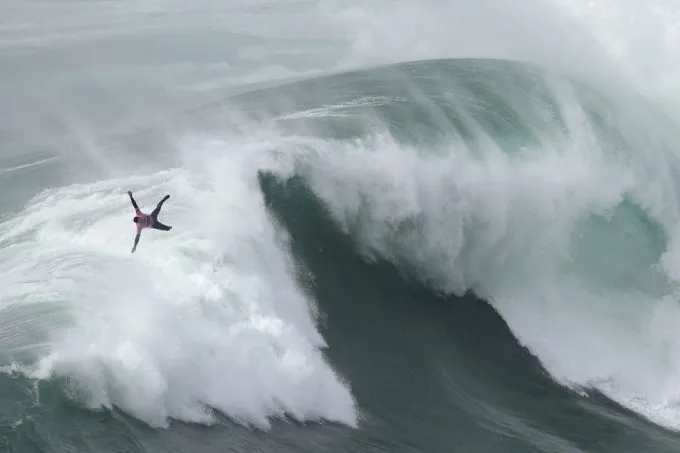Loading player
Among the most satisfying aspects for those who love surfing is to discover a beach where “there is wave”, that is, where the conditions are suitable, and above all hidden or unknown to most. When there are many surfers in the same place, in fact, surfing becomes much more difficult and dangerous: the stretches of sea where the waves are best crowd together, and everyone tries to get up at the same time, hindering each other. For this reason, one of the unwritten rules of the discipline, probably the most important one, requires that you do not share too much information on the most isolated places where you can surf, in order to avoid them becoming too well known and overcrowded, attracting occasional surfers and normal bathers. .
As the Australian surf magazine wrote a few years ago Trackskeeping the secrecy of the best places to surf is one of the things “more at risk»In the contemporary world. The growing popularity of sport has something to do with it, which has contributed to distorting some of the nuances of the culture behind it, but social networks in particular have to do with it. The New York Times he wrote that spreading the location or details of places to surf, especially those out of the way, is a bit like violating the first rule of Fight Cluballuding to the famous novel by Chuck Palahniuk – and to the film of the same name directed by David Fincher – in which a group of people meet secretly to fight each other, but also in a certain sense to redeem themselves.
Traditionally both people who practice surfing and magazines specialized and photographers who follow sport, keep a strict reserve on the little-known points where to do it: the more or less implicit invitation is not to take too many photos, not to turn them too much and possibly refer to the places photographed in a vague way, without specifying the city in which they are located and in some cases not even the province or the country. The same magazine Tracks for example, he had collected some useful rules to avoid having his secret place discovered: carefully choose the people with whom you speak about it, learn to use diplomacy to convince occasional spectators not to reveal its existence and, above all, stay on the stay away from social networks.
– Read also: Why Brazilian surfers are so strong
Facebook and Instagram are the “torment” of surfers almost everywhere, he wrote Tracks, noting that the very idea of social media was “in direct contrast to the principles of spirituality and humility” originally popular among surfers. Today, in fact, a single geo-localized post on social networks is enough to virtually let tens of thousands of users know a place previously known to a handful of people.
Some very popular surfing spots, such as Teahupoo, in Tahiti, French Polynesia, or Salina Cruz, in southwestern Mexico, have completely transformed after being discovered through word of mouth; others have gotten so crowded that pro surfers aren’t even worth going any more.
However, there is another problem: whoever disseminates photos or information that allows too many people to recognize and reveal the most hidden points also risks being subjected to threats, retaliation and assaults.
(AP Photo / Armando Franca)
For example, it happened to the American Chris Burkard, who has 3.8 million followers on Instagram and became known precisely for his photos of remote places, including those where to surf. Burkard told al New York Times to have begun to take an interest in surfing precisely because he was attracted by the “mystery and anonymity” of many of the places where it was practiced: in the meantime, however, his car was damaged and he received death threats.
The surf communities, however, continue to try to keep the secrecy on the most hidden places, with various precautions. Josh Mulcoy, professional surfer and photographer, told al New York Times that if he comes across some particular place and wants to make sure it remains a secret he doesn’t tell anyone but one or two friends, and there is an implicit agreement between them not to tell other people. Others decide instead to establish their own rules, for example who can surf and when, making them clear immediately with whom they should discover their secret places.
Grant Ellis, photo editor of the trade magazine The Surfer’s Journal, says instead to be careful not to show portions of the landscape that could allow you to clearly recognize the place from the photos he chooses to publish. He also says that he tries not to make clear the direction of the wind and the waves, information that those interested in surfing could interpret to get an idea of where they were taken.
– Read also: Surfing but without a board
First rule of surfing: we don’t talk about where to surf – Il Post

